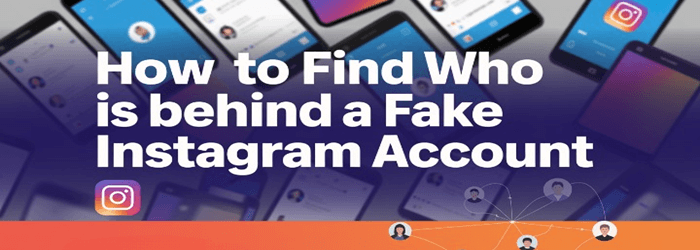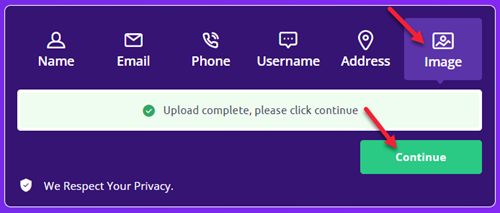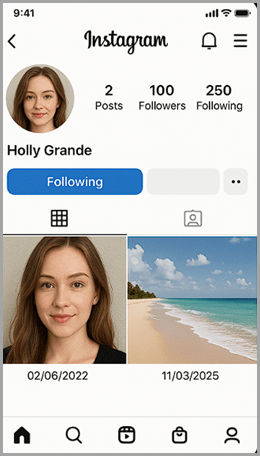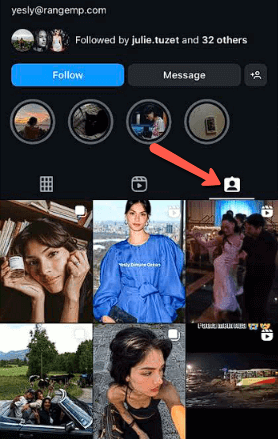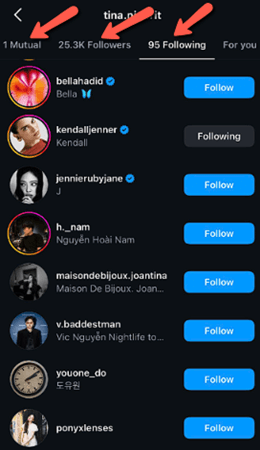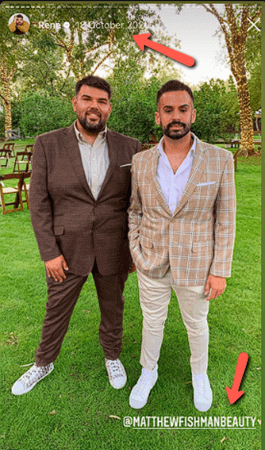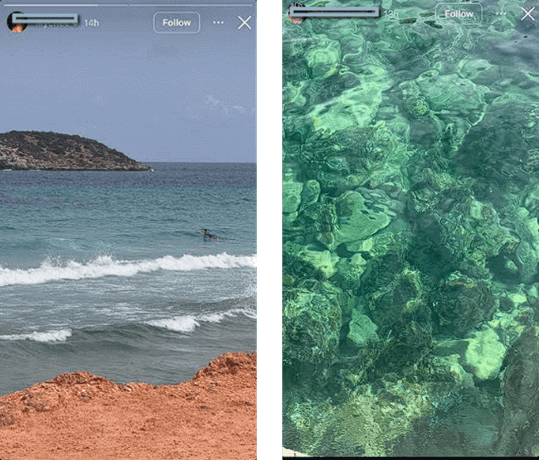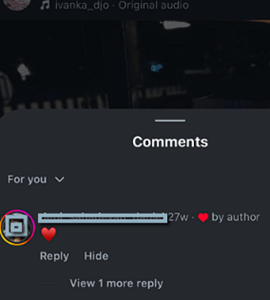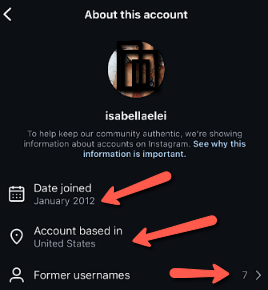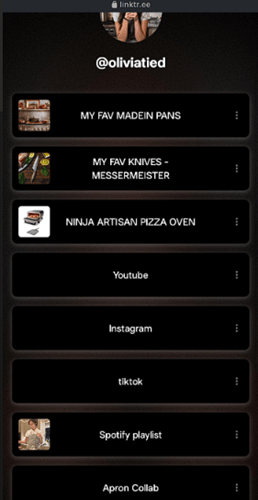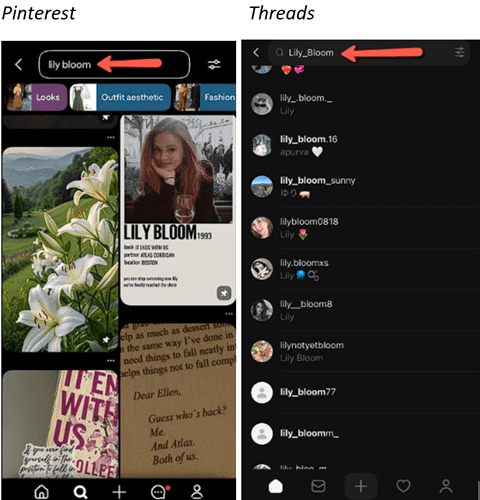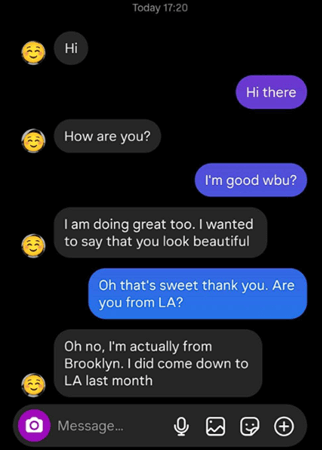How to Find Who is Behind a Fake Instagram Account?
Therefore, I spent days reviewing over 35 tools and methods to curate this article. My methods and outcomes are backed by first-hand experience and include not only their strength but also shortcomings and ways to solve them. However, you must also respect user privacy and ensure that you aren’t reporting random accounts as fake just because of personal grudges.
Method 1) Using Spokeo Reverse Lookup Site
Method Reliability: Very high
Spokeo is a people search tool that can be incredibly useful when trying to uncover who’s behind a fake Instagram account. From my first-hand experience, its username lookup and full name search features are best for finding fake profiles. They provided me with details on linked emails, phone numbers, locations, age, criminal records, images, social media, etc.
It’s ideal for verifying someone you’ve connected with on Instagram or if you’re suspicious about a random follower. While Spokeo sometimes provides outdated info, it compensates by sending alerts when a report is updated. This ensures you’re notified as soon as new details surface.
How to Know Who is Behind a Fake Instagram Account Using Spokeo
Here’s how I used Spokeo to find out who owns an Instagram account:
Step 1) Go to Spokeo
Visit https://www.spokeo.com/, add the full name or the username of the person, and tap on Search Now.
Step 2) Enter Name
Now, you will see some basic information and filters that will help you pick the right person. You can also go through each of these people found in the results one by one by clicking on See Results.
Step 3) This will help you unlock further details on the individual and help verify the person.
7-Days Trial for $0.95
Method 2) How to Find out Who Owns an Instagram Account Using Social Catfish
Method Reliability: Very high
Social Catfish is a reverse lookup tool that includes a powerful image scanner. I had a follower who would interact with my stories a lot, but I wasn’t sure if it was a genuine profile, since they looked too good to be true. Therefore, I used a few of his pictures and looked him up on social media. Turns out it was some model’s images that he or she was using for their fake account. It also led me to the real name of the model, which guaranteed it was a finsta.
However, make sure that the pictures aren’t heavily edited, as it may hinder the accuracy. You must also avoid uploading side profiles and poor-quality images, as they didn’t return any results when I tested. Hence, provide front-facing images and use a photo enhancer if you only have a low-quality picture. This method is helpful if someone is impersonating you or if they are harassing you online. You can also report these fake celebrity accounts to Instagram to help IG take them down. I also recommend using Social Catfish’s other searches, such as username search, etc., if the image lookup fails.
Follow the steps given below to use Social Catfish Reverse Image Lookup:
Step 1) First, go to https://socialcatfish.com/, select an image, then upload the photo of your target, and tap on Continue.
Step 2) Now, allow the tool to scan the image. This will perform a deep scan to find the information on the individual.
Step 3) Finally, enter your email and get the results. It will give you similar images, related pics, and their identity.
3-Day Trial for $6.87
Method 3) Do a Google Search
Method Reliability: Medium
Google Search is one of the quickest searches that you will come across in these methods. You can directly search the name of the person or their username. I used it to look up a certain user who continuously sent me a follow request even after being rejected. All you have to do is type the site name: Instagram.com “username” and then try with the variants.
It did take me a few attempts, but ultimately I was able to find out that it was my friend’s ex trying to keep tabs on her, perhaps. He was just using a celebrity’s name to hide his identity. If you fail to find anything, add keywords such as “scam“, “fake“, etc.” At times, it returns a generic list of names, so take your time and go through every link. Additionally, tap on the Images section, which may include the snaps of the fake IG account owner and the person they are impersonating. You can also use this trick to report fake celeb accounts or posers.
Method 4) By Looking At the Media Posted
Method Reliability: High
This method is for users who want to be sure whether a profile is fake before figuring out who is behind it. Start by looking at the media that an account posts, which can help you find out if it’s a dummy account. This is also good for people investigating a public profile or someone you are already following. In case you see a bulk upload with the exact dates, then you might already be looking at a fake profile. I have also noticed no consistency in such accounts because they have huge date gaps between their posts.
For example, a particular profile that I came across posted a carousel on 02/06/2022, and then a bulk upload was made on 11/03/2025. Such profiles may also have no highlights, and I noticed that some images seemed like they were taken in the US, while the rest felt like they were from some Southeast Asian country. Meaning they could be lying about their location. So, you can use these images to conduct a reverse search and verify them. In case they have nothing to inspect on their grid, try reverse username lookup tools.
Method 5) Check the Interaction on Their Posts
Method Reliability: Medium
There was a certain user who would DM me every week with the username ToniyaWaters. They had very few posts, which was already a subject of suspicion. Hence, I decided to check the interaction on their profile. The 5 posts that they had on their grid didn’t have any comments. However, the latest and the 6th one had two people in the comment section. Finally, when I went through whatever little likes they got, one of the profiles named Glen88Perreson was very consistent. I wasn’t surprised to see that a comment on ToniyaWaters’ 6th post also belonged to this particular profile. Thus, indicating that Glen could be the one behind ToniyaWaters’ profile.
I recommend that users who feel like someone is stalking them via a fake account try this method. However, if this person hasn’t posted anything, use the reverse username lookup tools like Spokeo to find out who is behind it. You can also check their follower and following list, if they haven’t restricted access.
Method 6) Look at Their Tagged Posts
Method Reliability: Medium
I have come across multiple tagged posts of people, and these media told an entirely different story from their main grid’s pictures. A friend of mine was chatting with a woman online who seemed to be anywhere from 28 to 32 years old. However, she catfished but forgot to hide or remove her tagged posts, which showed that she turned 48 recently, and all her images were from the late 2000s. Meanwhile, a few of them were also just her head photoshopped onto another woman’s body.
To find the tagged photos of a profile, just tap on the tagged section next to Reels. It’s just like what you do when you want to access Reels alone, but in this case, it’s Tagged posts. Then scroll through the media to see who a fake account might actually belong to. However, if their tagged posts are hidden, look for clues in the highlights. I also combine reverse username and image lookup methods in such cases.
Method 7) By Viewing the Follower and Following List
Method Reliability: High
See who they follow and who the people are following this person. If this ratio looks odd to you, for example, 15 followers but 1000 following, it could be a fake account. This can be useful for influencers or business owners who want to find out the person behind a troll account. Additionally, I have come across profiles that have followers with strange usernames that include numbers, russian texts, and special characters that aren’t used often. This indicates that they are bots. This is usually what fake accounts do to show a believable number of followers.
If you find any mutual friends in the following, then ask them who is behind this profile. However, if you do not know anyone from this list, go through the profiles of these individuals. Here, you may find a few open accounts. Check all the different kinds of posts they have and see if they are tagged in any of their uploads. I found a public account on the fake profile’s list and went through all their content. This led me to a highlight where the fake profile owner was tagged. Thus, showing me who is actually behind this finsta. However, if their list is locked from viewing, you can check the likes and comments section.
Method 8) Observe Their Story Pattern
Method Reliability: Medium
If you are already following this individual, then you can check how often they post stories. If you rarely see any activity on their story, then they might be a fake account or just an inactive individual. However, you may also see that they do upload a few stories but never show their face. They might also post random, unrelated images and videos without ever revealing their face or voice. This method can help you filter your followers or bot accounts.
After years of experience, I have realized that these fake account owners never share any regular stuff, such as food snaps, mirror selfies, group photos, polls, questions, etc. This can help people find out if they are being stalked by a fake account. It may also indicate that it’s just a bot behind this profile. However, if they have zero posts and they never upload any stories, just unfriend or block them. But if you are still curious, then you can try a reverse username lookup.
Method 9) Analyse How the Account Interacts
Method Reliability: Low
Seeing how an account interacts with your posts can also tell a lot about the person behind a fake profile. Check how fast and often they view your stories, and how much they tap like on them. You can also check what they comment on your pictures or reels, for example, some of them may leave inappropriate statements as well.
If you are chatting with them, you may receive replies at odd hours. There was a case when a follower would reply to me at around 3 to 4 AM, however, they said they were from LA. But their choice of wee hours made me suspect they lied about their location. In some cases, they might also be cheating on their partner, which is why they reply late. Additionally, take note of them avoiding questions that require them to share some personal information. Gathering this data, you can find out if it’s a fake account.
Method 10) Check Instagram’s “About This Account”
Method Reliability: Medium
This is a quick and simple trick where you can find some information on any account. All you have to do is tap on the three dots option on the top right-hand side of the profile. This will show you when the account was created, where it is based, its previous usernames, etc. One of the accounts I had my doubts about turned out to be my high school friend, who has changed their username about 7 times.
However, some of the profiles may not provide much detail other than when they joined Instagram. That’s when you may try different tricks like reverse searching their image, checking their following and follower list, etc.
Method 11) Check If They Have Any Linked Profiles in Bio
Method Reliability: Medium
This is another helpful trick that can give you some clues about who is behind a fake Instagram profile. I was going through some of the quiet profiles that always watch my stories but never post anything themselves. That’s when I found a few of them with a link in their bio, which took me to their other social media accounts, such as Threads, Snapchat, etc. A few of them also had additional IG accounts where they had a gallery of different pictures.
This information showed me the person behind some of these silent profiles. You can try this method if you are curious about someone, or it may even help you track a stalker. However, at times, people do not put up any links or additional accounts’ information on their bio. In such cases, try to inspect their posts or get some idea from their following and follower list.
Method 12) Do Not Overlook the New Tag
Method Reliability: Low
Instagram has introduced a feature that adds a “New” tag to a profile that has just been created. At times, this may indicate that it’s a fake profile, however, it may not always be the case. Therefore, whenever you come across a DP with the “New” tag on it, keep your suspicions high. I also suggest keeping an eye on their profile pic, since one such account that I observed kept using vague anime pictures. Thus, I assumed that it’s someone who is into anime or manga. This also indicated that the person was definitely in an age group of Millennials or Gen Z.
Hence, I had some clue about the user, although it may not always be accurate. This method also gives you bits and pieces of information that people working in law enforcement might like to use. You can then go to the About this account to see when it was created, previous usernames, etc., for more information.
Method 13) Try to Find Them On Other Social Media
Method Reliability: Medium
The other effective way that has helped me several times is directly looking for them on other social media. You can check Facebook, Twitter, Threads, Pinterest, and other social networks. Just type in the same username or the full name on these platforms to find them. You can also try using the Google search in this case if the direct lookup isn’t working out for you.
Additionally, do try variations of their full name and username. Such as Lily Bloom’s variations could be Lily_Bloom, Lily_B, LlyBloom96, etc. It takes patience to do this; therefore, look for them consistently. One of the major drawbacks of this method is that fake account owners might be using an entirely different name on these platforms. In such a scenario, try using Spokeo, a reverse username lookup, to find their identity.
Sometimes it can be impossible to find someone on other social media, or they might not even be on them. In such situations, you might have to consider crossing the enemy lines and finding out.
Method 14) Try to Interact With the Account Cautiously
Method Reliability: Medium
Try to extract some information from the account by having a conversation or commenting on the posts. This can help law enforcement agencies investigating some online harassment cases or dealing with child molesters, etc. Ease them in slowly– start by liking their stories and posts. You should also reply to their comments if you see that they are interacting with your content.
Then steadily try DMin them, one of the fake accounts took this bait and DMed me themselves. This allowed me to have a conversation with them, and then slowly I could throw in a few questions about where they are from, how old they are, etc. Now, you don’t have to reveal anything real to them, because you never know if they are telling the truth either. However, you could ask them for tiny proofs if they have no pictures on their profile. Do not go overboard or get rude, since you do not want to provoke them or lead them to harass you.
Interacting directly can be useful, but if they are impersonating you, then they might block you. In such cases, you might have to dig a little deeper, which is why you can try this next method.
Method 15) Run the Username Through Leak Checkers
Method Reliability: Medium
Leak Checkers, such as Have I Been Pwned, are a good way to find out if your data is being misused. You can search for email, domain, passwords, etc., and get notified. This can be of help for people who want to find out if they are being impersonated by someone. This way, you can determine if an individual is pretending to be you by using your name and images. You will also be able to find out if your password, email, etc, have been compromised using this tool. All you have to do is go to this website, enter your email ID, and tap Check to find out. However, it may not always work; the person could be just using your pictures. In such cases, report the account and urge your friends to do so for Instagram to take it down.
If nothing else helps and the fake account matter gets out of your hands, or you aren’t very tech-savvy, consider getting help from a professional.
Method 16) Using a Private Investigator
Method Reliability: Very High
Hiring a private investigator has also worked out for some of the users who were dealing with more serious situations. It can be an expensive way of uncovering the identity of a fake profile, but a very effective one. These professionals are equipped with tools and techniques that will easily find out who the individual is, along with other important details.
In my neighborhood, a lady hired a PI to find out who was stalking her daughter online due to constant threats and harassment, and the impersonator was found within a day. However, you won’t require such in-depth research unless you are under some serious risk.
How to Protect Yourself From Fake Instagram Accounts
Here are some of the best ways to protect yourself from fake Instagram accounts
- Always verify the profile picture, bio, posts, followers, and following ratio, etc., before you accept a request.
- Do not click on the suspicious links that you get in your DMs, or do not follow on unfamiliar or shortened links without ever verifying the source.
- You must enable 2FA on your IG account to get an extra layer of security from unauthorized access.
- I suggest reporting the profiles that you suspect are fake and bother you by constantly trying or interact or harass you.
- There are many fake accounts that pose as people who want to collaborate with you– beware of these accounts.
- There are also fake giveaway contents on Instagram that are targeted by these dummy profiles. So do not participate in such contests without proper verification.
- Limit who can mention you or interact with you in DMs, stories, comments, etc. This offers better control over your privacy.
What to Do if a Fake Account is Impersonating You
It is quite common for users to get impersonated on IG, and we see it happening to many profiles every once in a while. Thus, do not worry if someone has created your fake profile; just follow the instructions given below:
- Document all the details of this fake profile, such as their image, the posts, messages sent, URLs, stories, highlights, comments, etc. This will help gather evidence and build a case.
- Report the account to Instagram and select all the right options that point towards you being imitated by someone.
- Put up a story and inform all your friends and followers about the fake IG account, and ask them all to report it.
- Report it to the cybercrime authorities if it gets out of hand and the person starts posting misleading information, defaming, etc. Additionally, send a legal takedown notice by consulting a lawyer.
What are Instagram’s Official Policies on Fake Accounts
Here are the four main Instagram policies on fake accounts:
- Impersonation is strictly forbidden as per IG policies:
It is prohibited to impersonate any user, and you cannot claim their identity. When an account is reported, it will be taken down immediately, and in serious cases, it is a criminal offense. - ‘Inauthentic behavior’ is not welcomed by Insta policies:
Meta bans fake accounts and networks involved in misleading users by using someone’s identity. You cannot create not only fake accounts but also pages and groups. - Community guidelines must be taken seriously:
Not only fake but spamming, excessive interaction with other accounts, such as continuous double-tapping, etc., might get flagged. Such behavior might be alerted to IG as a bot, which leads to bans and account disabling. - Shutting down of the network if any fake account is detected:
Instagram can also actively detect and remove multiple fake accounts at once. Especially if you create several accounts and engage in coordinated inauthentic behavior, for example, manipulation of online voting, etc.
FAQs
Conclusion
After testing all of the methods and drawing from my real-life experiences, I found Spokeo, Social Catfish, Google Search, and inspecting their profile are most effective. However, with different use cases and scenarios, the preference for the method might also differ. Therefore, I suggest using a combination of various tricks at once for better results and accuracy. But just because you think someone is using a fake account, you do not have to start playing detective. You can try unveiling a fake account if they are harassing you or stalking you. The best way to deal with online harassment is to block the account or report it to Instagram and urge your friends to do the same to help you.

